
Article Preview
 Title: Statue of St Francis Xavier, British Lighthouse & St Paul's Church
Title: Statue of St Francis Xavier, British Lighthouse & St Paul's ChurchLocation: St Paul's Hill, Melaka (Malacca), Malaysia
Date: 17 March 2009, 3:39pm
Camera: Nikon D60 with Aperture: f/9.0, ISO Equiv.: 100
This photo was taken while I was climbing up St Paul's Hill.
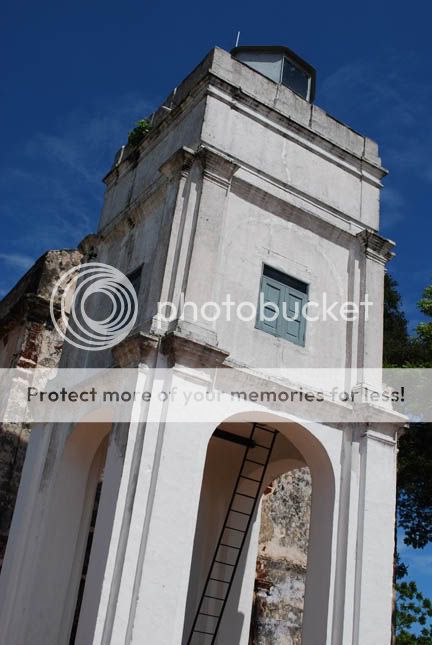 Title: The Lighthouse
Title: The LighthouseLocation: St Paul's Hill, Melaka (Malacca), Malaysia
Date: 17 March 2009, 3:24pm
Camera: Nikon D60 with Aperture: f/9.0, ISO Equiv.: 100
A modest lighthouse built by the British. A latter addition to St Paul's Church.
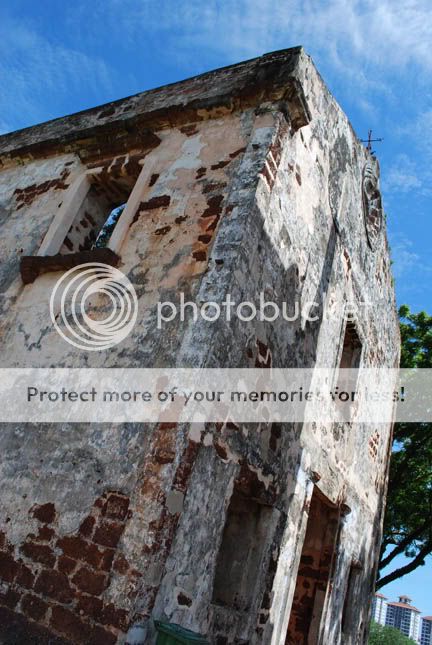 Title: Remnants of St. Paul's Church
Title: Remnants of St. Paul's ChurchLocation: St. Paul's Hill, Melaka (Malacca), Malaysia
Date: 17 March 2009, 3:38pm
Camera: Nikon D60 with Aperture: f/8.0, ISO Equiv.: 100
A frontal view of the church. The roof is gone. When you step into the church, you can see some gravestones lying on the church wall.
Location: St Paul's Hill, Melaka (Malacca), Malaysia
Date: 17 March 2009, 3:26pm
Camera: Nikon D60 with Aperture: f/8.0, ISO Equiv.: 100
The lighthouse is built in front of the church when British take over the church.
Location: St Paul's Hill, Melaka (Malacca), Malaysia
Date: 17 March 2009, 3:25pm
Camera: Nikon D60 with Aperture: f/9.0, ISO Equiv.: 100
The right arm of this statue was broken off by a fallen casuarina tree a day after the statue was erected!
Title: Dutch Graveyard
Location: St Paul's Hill, Melaka (Malacca), Malaysia
Date: 17 March 2009, 4:08pm
Camera: Nikon D60 with Aperture: f/8.0, ISO Equiv.: 100 Despite its name, only five of the graves in the cemetery contain remains of Dutch officers, the other 33 belong to British administrators and their spouses.
Location: St Paul's Hill, Melaka (Malacca), Malaysia
Date: 17 March 2009, 3:36pm
Camera: Nikon D60 with Aperture: f/6.3, ISO Equiv.: 100 These writings or inscriptions reminds me of Lord of The Ring the movie.
Date: 17 March 2009, 3:36pm
Camera: Nikon D60 with Aperture: f/6.3, ISO Equiv.: 100 These writings or inscriptions reminds me of Lord of The Ring the movie.
Location: Jalan Tukang Besi, Melaka (Malacca), Malaysia
Date: 16 March 2009, 10:48am
Camera: Nikon D60 with Aperture: f/7.1, ISO Equiv.: 100 A majestic view of Kg. Keling Mosque.
Camera: Nikon D60 with Aperture: f/7.1, ISO Equiv.: 100 A majestic view of Kg. Keling Mosque.
Location: Kg. Keling Mosque, Melaka (Malacca), Malaysia
Date: 16 March 2009, 10:50am
Camera: Nikon D60 with Aperture: f/9.0, ISO Equiv.: 100 I stayed in Jalan-Jalan Guesthouse. I walk to this mosque at least five times just to look at the beauty of this majestic mosque. Kg. Keling Mosque is one of the oldest surviving mosque in Malaysia.
Date: 16 March 2009, 10:50am
Camera: Nikon D60 with Aperture: f/9.0, ISO Equiv.: 100 I stayed in Jalan-Jalan Guesthouse. I walk to this mosque at least five times just to look at the beauty of this majestic mosque. Kg. Keling Mosque is one of the oldest surviving mosque in Malaysia.
Location: Kg. Keling Mosque, Melaka (Malacca), Malaysia
Date: 17 March 2009, 4:42pm
Camera: Nikon D60 with Aperture: f/7.1, ISO Equiv.: 100 A perfect view of Kg. Keling Mosque. Love the combination of padoga like minaret and the green roof. A mixture of Malay, Indian and Chinese architecture. Simply impressive! I decided to have a jalan-jalan trip to explore Malacca's World Heritage Sites. It was a damn hot afternoon. I was sweating profusely and my skin was virtually burning! I decided to carry on exploring these wonderful places since the sky is truly amazing - it was a perfect bluish afternoon after a short drizzle. I climbed up St Paul's Hill to witness for myself the grandiose remnant of St Paul's Church. The first thing that caught my attention is the statue of St Francis Xavier overlooking the city of Malacca. I think it is pure white marble statue. Interestingly, the right arm of the statue is not there! Initially, I thought some crazy people vandalised the statue. I did some research and discovered that a day after the statue was consecrated, a large casuarina tree fell on it, breaking off its right arm. And so it stands today without one limb. Hmm...I dunno whether this is a good or bad omen. Later, I venture into the St Paul's Church. I can see some large-sized gravestones lying on the wall of the church. The writings and inscription on the stone are really mind-boggling. Beside that, it has some funny looking symbols and signs that include skulls and gun. I am no expert in Malaysia's history. I found some really nice and interesting facts about the origin of St Paul's Church. St. Paul's Church started off as a small chapel built by the Portuguese, and was called the Chapel of the Mother of God orIgreja de Madre de Deus, or Our Lady of the HillNossa Senhora do Oiteiro, also called Our Lady of Grace, or Nossa Senhora da Annunciada. When the Dutch wrestled Malacca from the Portuguese in 1641, they destroyed all the Portuguese buildings except for the fortress, on which they placed the Dutch emblem. This can be seen today on the remaining gate of the fortress, the Porta de Santiago. The Dutch also took over the Portuguese chapel on top of the hill, repaired and reconsecrated it into a Dutch Reformed Church, calling it St. Paul's Church, a name which remains until today. The Dutch used it for their worship for the next 112 years, until they built their own church at the foot of the hill, Christ Church. St. Paul's Church was then abandoned. When the British took over Malacca in 1824, the St. Paul's Church has lost its tower. However, the British added a lighthouse in front of it. And instead of being used it as a place of worship, the Church became a convenient storehouse for British gun powder. The Statue of St. Francis Xavier was added in 1954. Facts in italic are taken from http://www.malacca-traveltips.com/st-pauls-church.htm
Date: 17 March 2009, 4:42pm
Camera: Nikon D60 with Aperture: f/7.1, ISO Equiv.: 100 A perfect view of Kg. Keling Mosque. Love the combination of padoga like minaret and the green roof. A mixture of Malay, Indian and Chinese architecture. Simply impressive! I decided to have a jalan-jalan trip to explore Malacca's World Heritage Sites. It was a damn hot afternoon. I was sweating profusely and my skin was virtually burning! I decided to carry on exploring these wonderful places since the sky is truly amazing - it was a perfect bluish afternoon after a short drizzle. I climbed up St Paul's Hill to witness for myself the grandiose remnant of St Paul's Church. The first thing that caught my attention is the statue of St Francis Xavier overlooking the city of Malacca. I think it is pure white marble statue. Interestingly, the right arm of the statue is not there! Initially, I thought some crazy people vandalised the statue. I did some research and discovered that a day after the statue was consecrated, a large casuarina tree fell on it, breaking off its right arm. And so it stands today without one limb. Hmm...I dunno whether this is a good or bad omen. Later, I venture into the St Paul's Church. I can see some large-sized gravestones lying on the wall of the church. The writings and inscription on the stone are really mind-boggling. Beside that, it has some funny looking symbols and signs that include skulls and gun. I am no expert in Malaysia's history. I found some really nice and interesting facts about the origin of St Paul's Church. St. Paul's Church started off as a small chapel built by the Portuguese, and was called the Chapel of the Mother of God orIgreja de Madre de Deus, or Our Lady of the HillNossa Senhora do Oiteiro, also called Our Lady of Grace, or Nossa Senhora da Annunciada. When the Dutch wrestled Malacca from the Portuguese in 1641, they destroyed all the Portuguese buildings except for the fortress, on which they placed the Dutch emblem. This can be seen today on the remaining gate of the fortress, the Porta de Santiago. The Dutch also took over the Portuguese chapel on top of the hill, repaired and reconsecrated it into a Dutch Reformed Church, calling it St. Paul's Church, a name which remains until today. The Dutch used it for their worship for the next 112 years, until they built their own church at the foot of the hill, Christ Church. St. Paul's Church was then abandoned. When the British took over Malacca in 1824, the St. Paul's Church has lost its tower. However, the British added a lighthouse in front of it. And instead of being used it as a place of worship, the Church became a convenient storehouse for British gun powder. The Statue of St. Francis Xavier was added in 1954. Facts in italic are taken from http://www.malacca-traveltips.com/st-pauls-church.htm


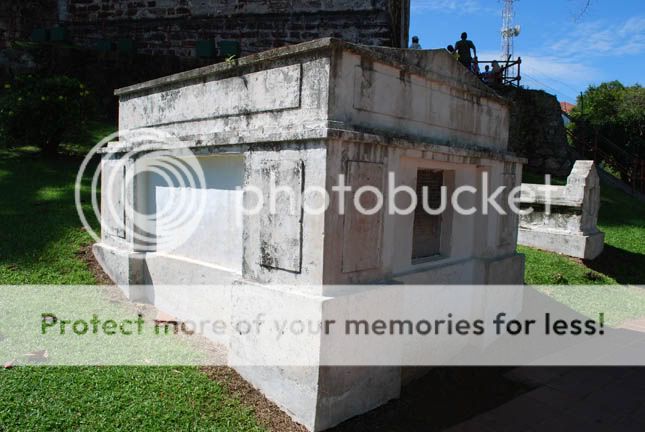



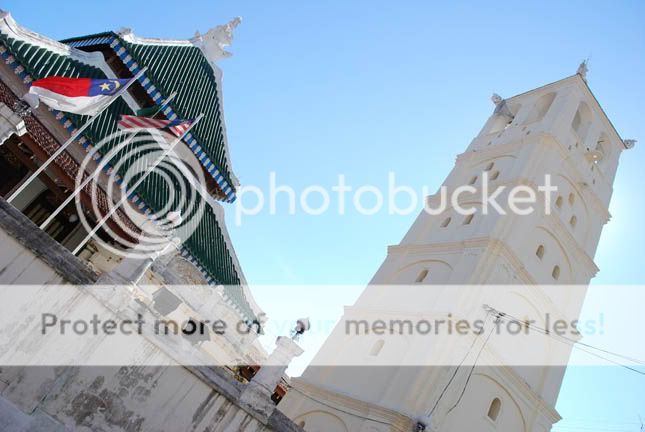






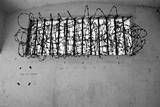







0 comments